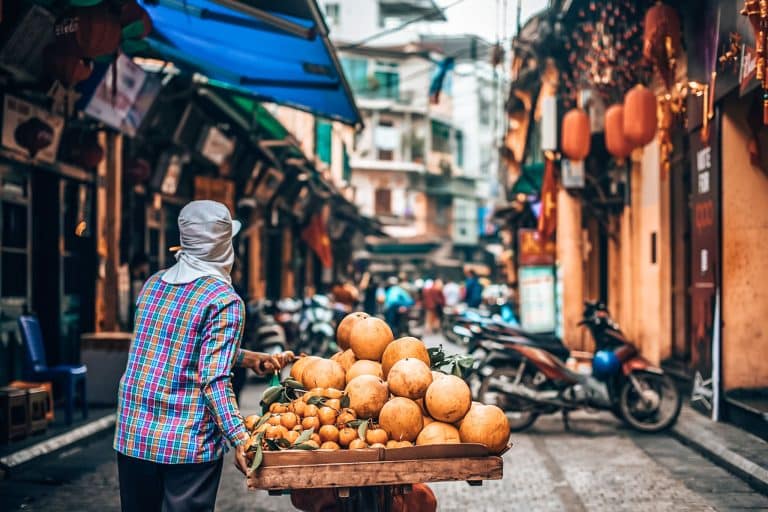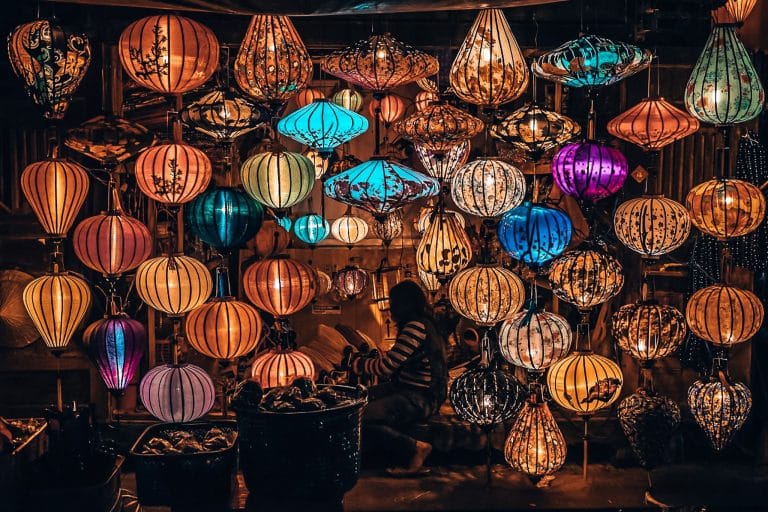
The Best of Vietnam
Cruise amongst magnificent limestone karsts, explore quaint narrow streets home to historical buildings, admire vibrant lantern-strewn streets, eat delicious street food by the side of the road and hike through endless lush rice terraces. This is just some of the best of Vietnam; continue reading for more and everything you need to know for your visit including how long we’d recommend, how to get around and the best time to visit Vietnam.
Brightly coloured lanterns hang from the side of colourful buildings, delicious smells waft through quaint narrow streets, yummy food eaten on stools by the side of roads and chaotic streets alive with the sounds of motorcycles, street food stalls and people going about their daily life; Vietnam is a rush to all the senses.
Cruise through the hauntingly beautiful Ha Long Bay, trek through rice fields to remote hill tribe villages, escape to a gorgeous white sand beach, browse bustling and colourful night markets, hike through coffee plantations, discover Vietnam’s rich history and more. There are many amazing things to do in Vietnam, read on to discover how to make the most of your visit.
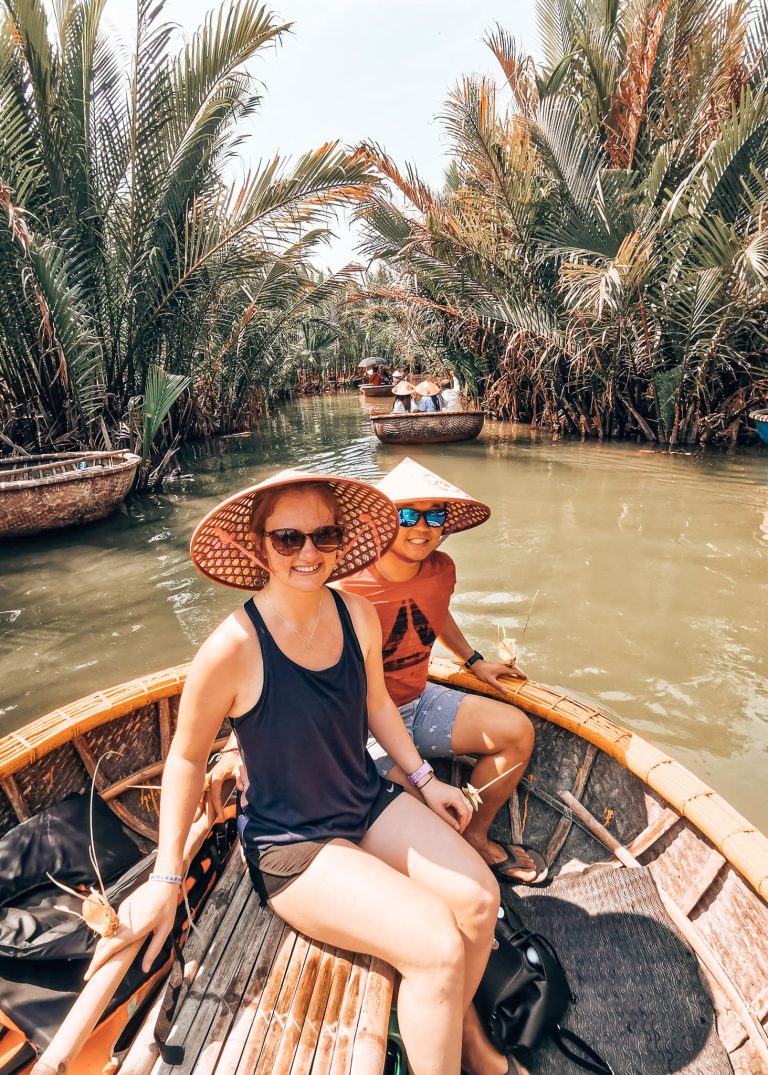
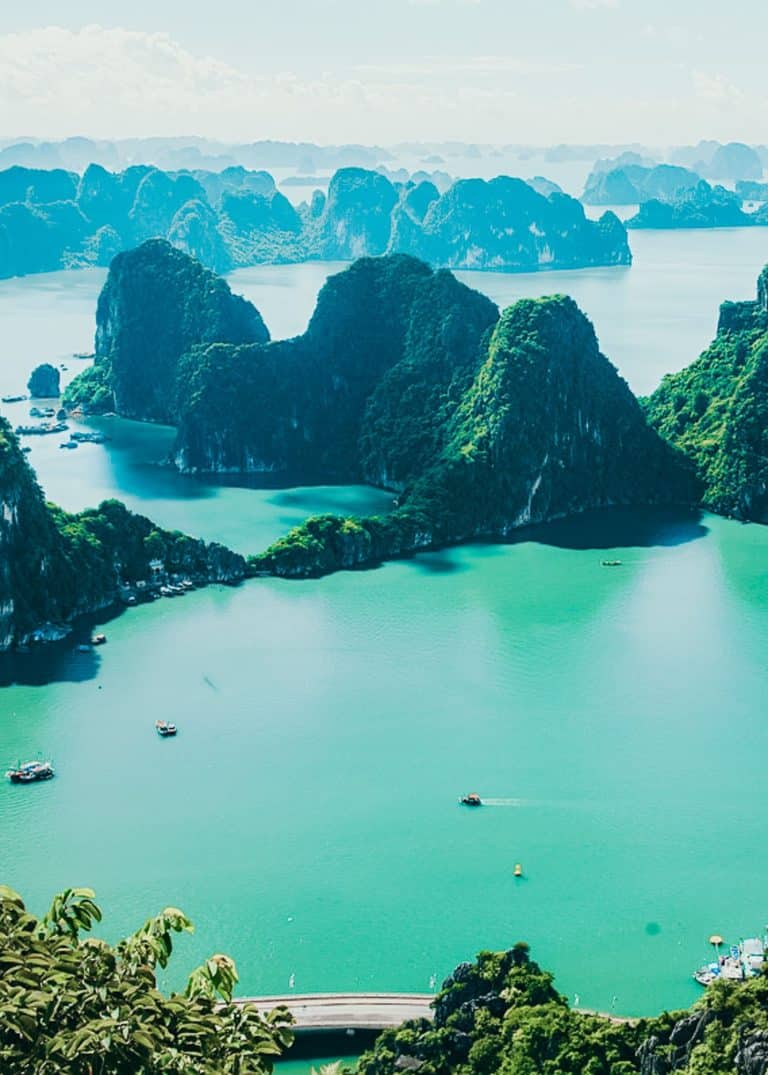
In this guide to the best of Vietnam, we’ll cover the top things to do and places to visit in Vietnam and then share everything you need to know including how long we’d recommend, how to get around and the best time to visit Vietnam.
Contents
No time to read this best of Vietnam guide now? No worries, why not pin it for later?
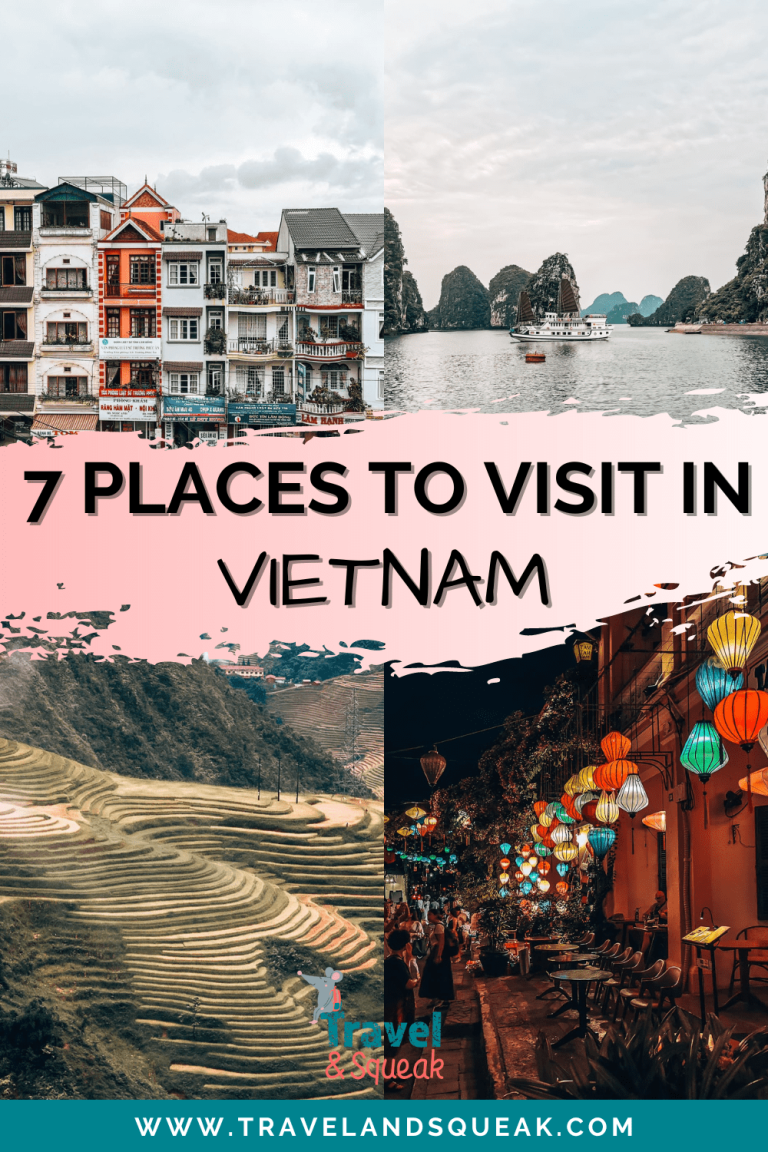
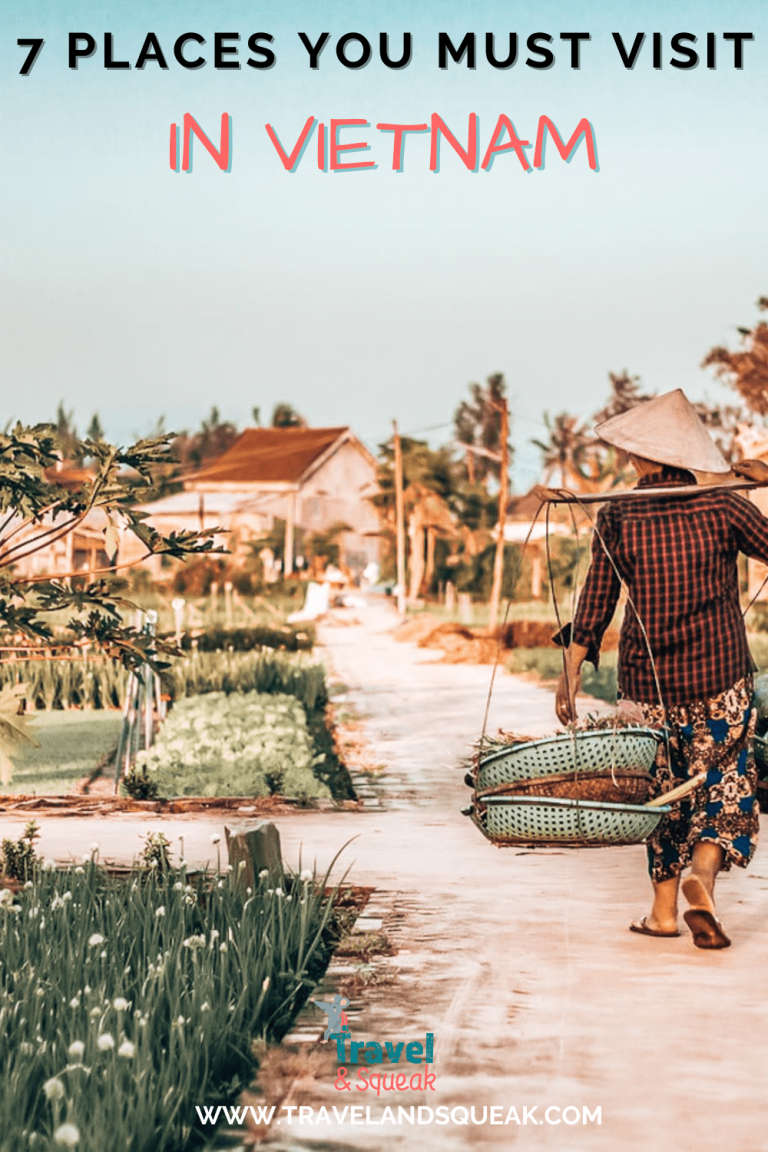
Best of Vietnam
Hanoi
We’ll kick this guide to the best of Vietnam off with Hanoi; the chaotic Vietnamese capital full of centuries-old architecture, and a rich culture with influences from Southeast Asia, China and France.
Hanoi will most likely either be the start or end of your trip. Whichever it is, make sure to spend at least a couple of nights here. Hanoi is one of the best places to visit in North Vietnam, there’s always so much going on.
Hanoi can be a bit overwhelming at first, especially if it’s your first experience with Asian cities. The volume of motorbikes, the beeping of horns, the bright lights and pollution but go with it and you’re sure to find a side you love. The frantic energy of this city is captivating.
Head to the Old Quarter where you’ll undoubtedly get lost in the labyrinth of 36 streets.
The Old Quarter is the heart of Hanoi and is easily explored on foot. It’s the most beautiful area of Hanoi which, at first glance can look hectic so we’d recommend grabbing a Vietnamese coffee in a cafe with some outside stools and watching the world go by around you.
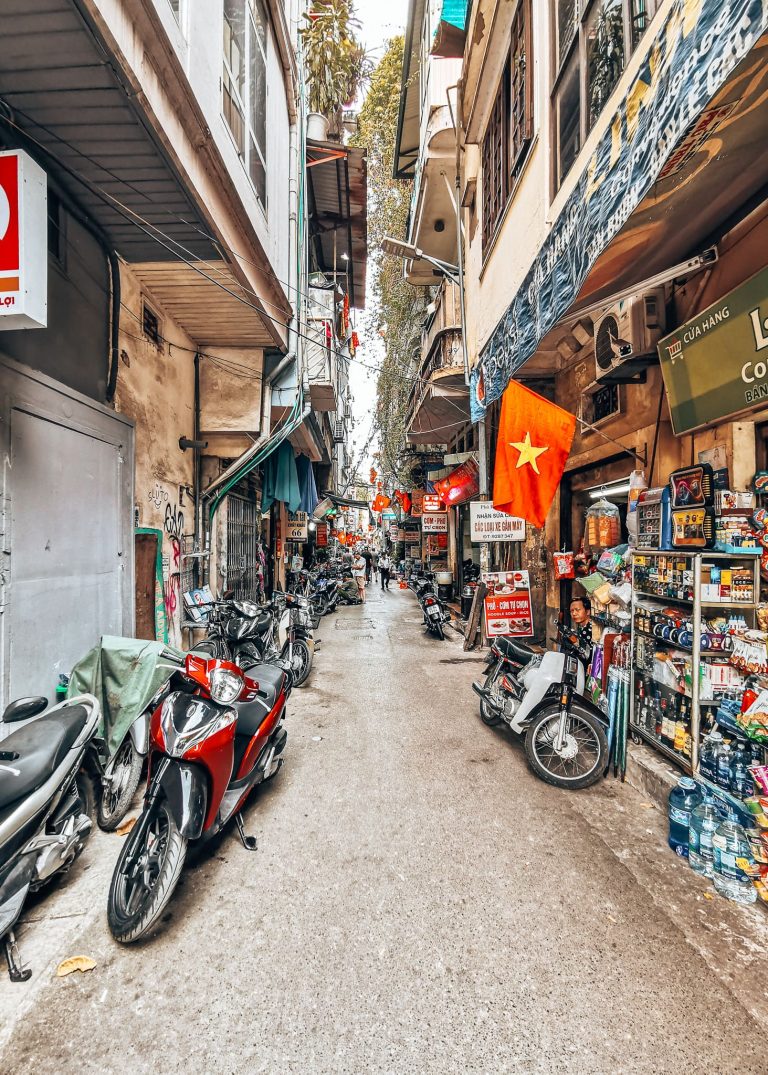
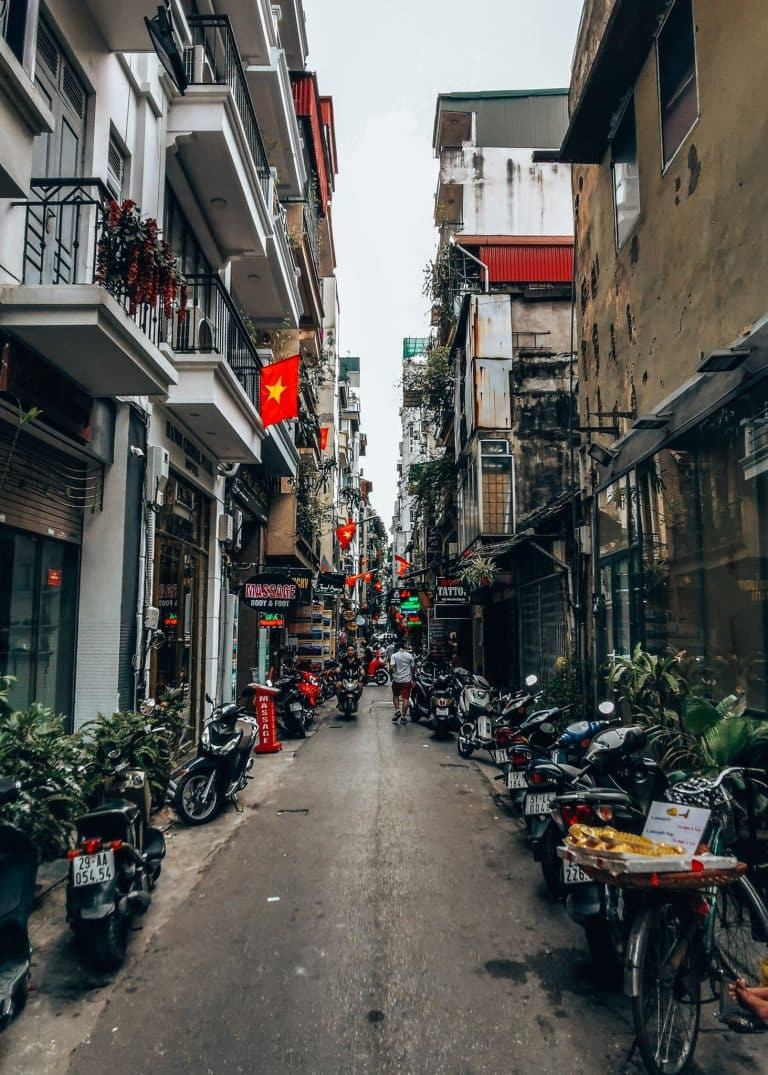
The Old Quarter is one of the best places to visit in Vietnam. Home to fresh and delicious street food, ancient buildings with traditional shops, historic pagodas, bicycle vendors selling fresh fruit, friends gathering in picturesque green parks to play checkers, hidden alleyways and the beautiful Hoan Kiem Lake; a peaceful place to relax under the shade of a tree.
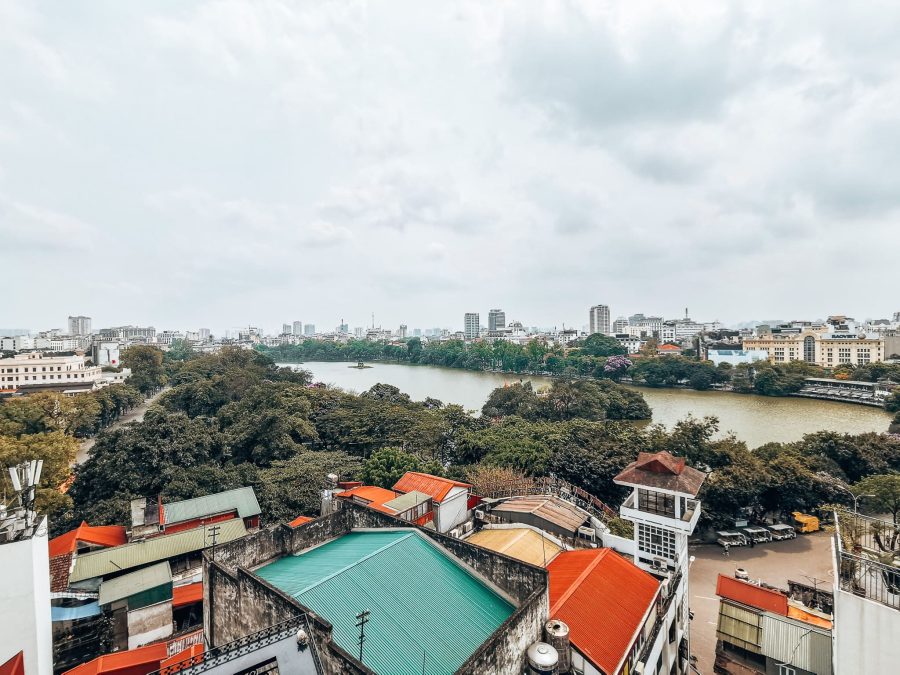
Hanoi truly is the best of Vietnam and other highlights include Train Street, Hoa Lo Prison, Ho Chi Minh Mausoleum, The Temple of Literature and the Water Puppet Show. For our full guide on things to do in Hanoi, head to our blog post below.
We’d recommend staying in the Old Quarter to be amongst the action and within walking distance of the city’s top things to do and best restaurants.
Our top tip: if this is the first time you’re crossing the road in Vietnam, it’s going to look terrifying! Traffic lights are rare and when they do exist, everyone ignores them. Vehicles fill the street and there’s never any let up. The trick is confidence and once you’ve stepped out, commit! If you hesitate then you become the hazard. The guy hurtling towards you on his motorbike with phone in one hand, cigarette in another and a crate of chickens on the back will swerve around you!
Ha Long Bay
The magnificent Ha Long Bay consists of around 2000 limestone karst peaks protruding from calm emerald waters.
Glimpse the floating villages that Ha Long Bay is home to, explore the water on a kayak and discover the majesty of the caves dotted around the islands.
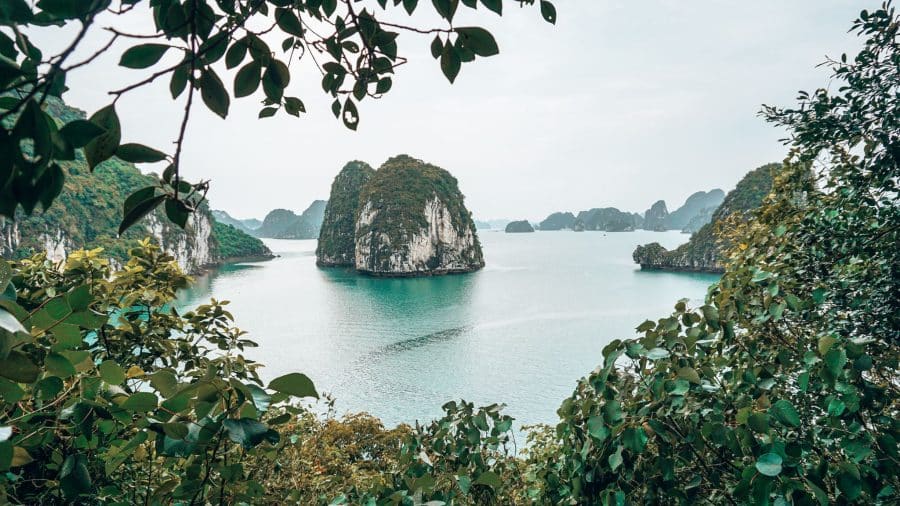
Ha Long Bay is without a doubt tranquillity at its finest; it’s one of the most beautiful places in Vietnam. Whether it’s a gorgeous sunny day and you can see for miles around endless jagged karsts or it’s misty and eerie, both experiences will be truly memorable.
Designated a UNESCO World Heritage Site for its natural beauty, enjoying Ha Long Bay on an overnight cruise is one of the best things to do in Vietnam and will undoubtedly be a highlight of your trip.
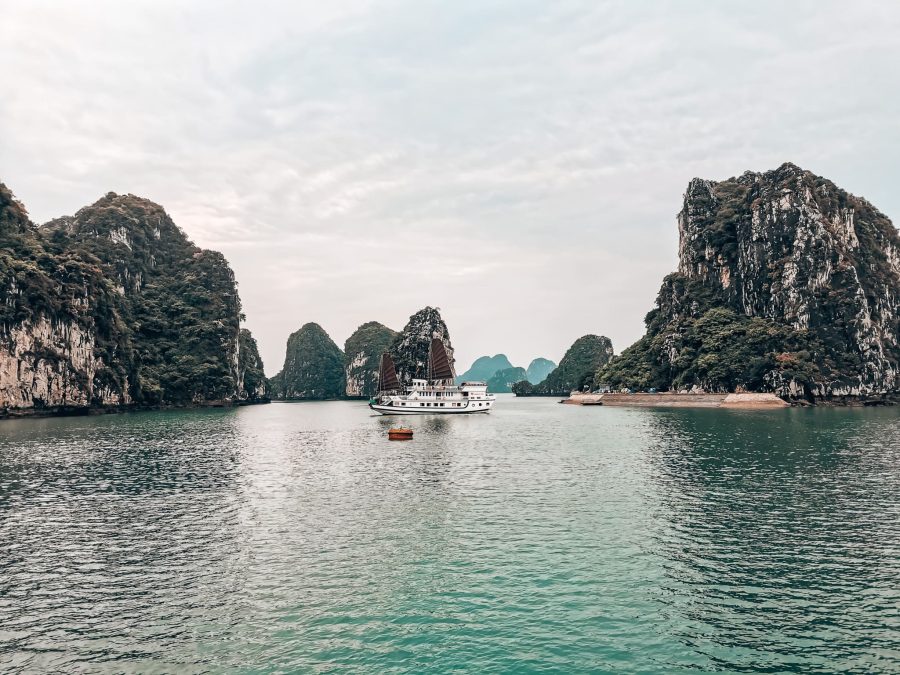
Our Top Tip: opt for a cruise on Lan Ha Bay instead of Ha Long Bay if you can. As stunning as Ha Long Bay is, it’s very crowded with cruises and parts of the sea are quite polluted. Lan Ha Bay hasn’t been affected by tourism as much.
Sapa
Home to lush fields, rice paddies that stretch as far as the eye can see and Vietnam’s tallest mountain, Sapa is one of the most panoramic places to visit in North Vietnam.
Standing in the middle of a rice field watching a buffalo hard at work, you easily feel a world away from Hanoi. Hiking, enjoying nature and learning about the different ethnic tribes are what Sapa is all about.
With more than 20 ethnic tribes, each with its own language, clothing style, and set of traditions, Sapa is one of the most culturally diverse places in the country.
Traditionally, these tribes worked in the fields but have now expanded into tourism, including tour guides and producing traditional-style clothing for tourists to buy.
Our tour guide, Su, informed us she had learnt English from the tourists who visited Sapa so she could become a tour guide and earn more money for her and her family.
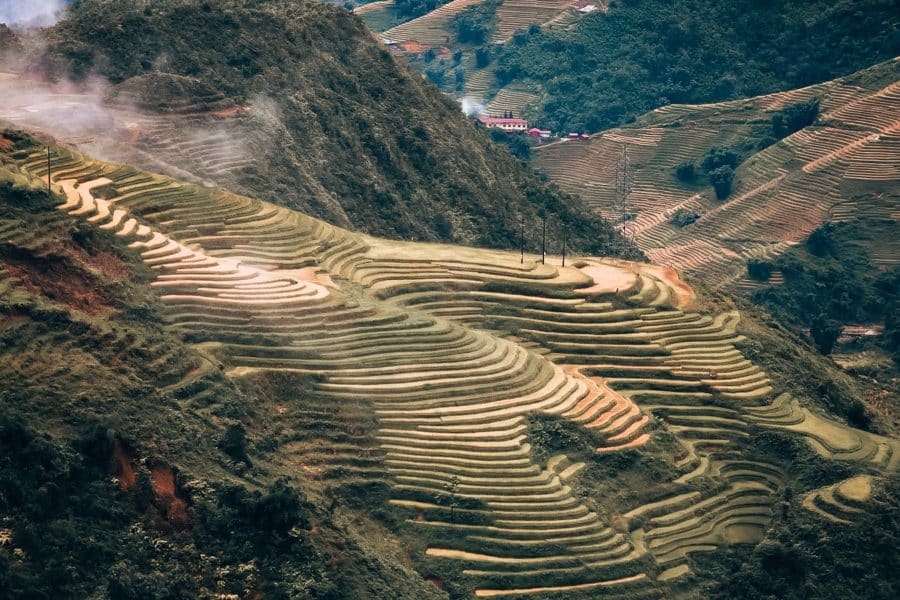
Our Top Tip: we’d recommend booking a trek with a guide for a couple of reasons. Firstly, you learn a lot about the region and ethnic tribes which we wouldn’t have done without a guide. Secondly, it’s impossible to see where the walking trails are as there are barely any signs and you’re often walking through people’s fields rather than on an actual trail.
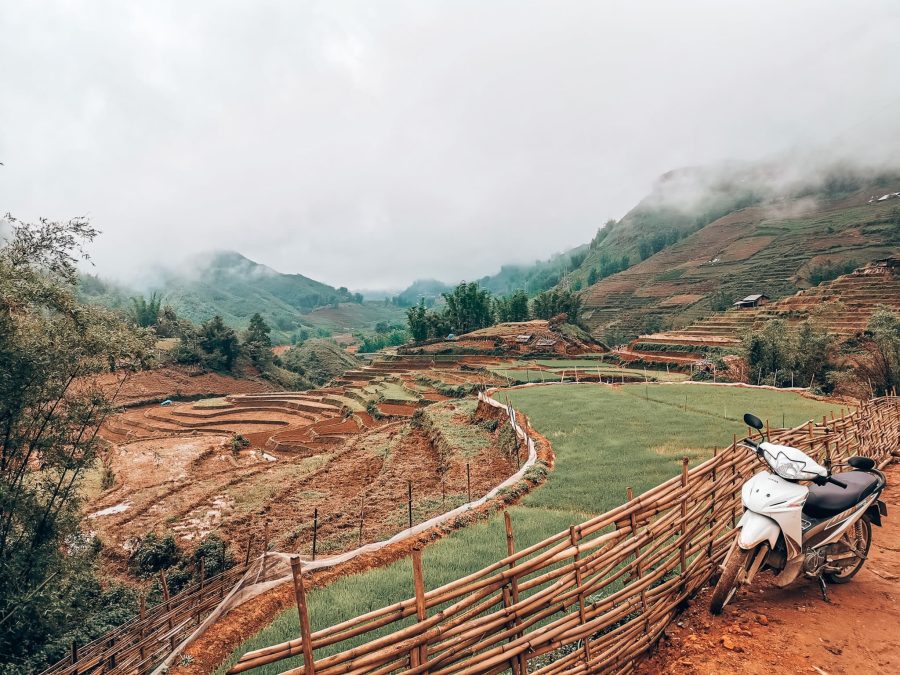
Hue
Between 1802 and 1945, under the rule of the Nguyen Dynasty Emperors, Hue was the nation’s capital. It was also the cultural and religious heart of the country and today is one of the most fascinating places to visit in Vietnam.
Boasting a lovely location along the Perfume River; the colonial architecture, quiet streets and locally famous cuisine all add to Hue’s laid-back charm.
The most famous sites in Hue are the Imperial Citadel, the Thien Mu Pagoda and the Forbidden Purple City. Together, these have been recognised as a UNESCO World Heritage Site.
Although much of the Citadel is in ruins due to the Vietnam War, you can still see some of the City’s gates and walls and using your imagination you can picture what it must have looked like.
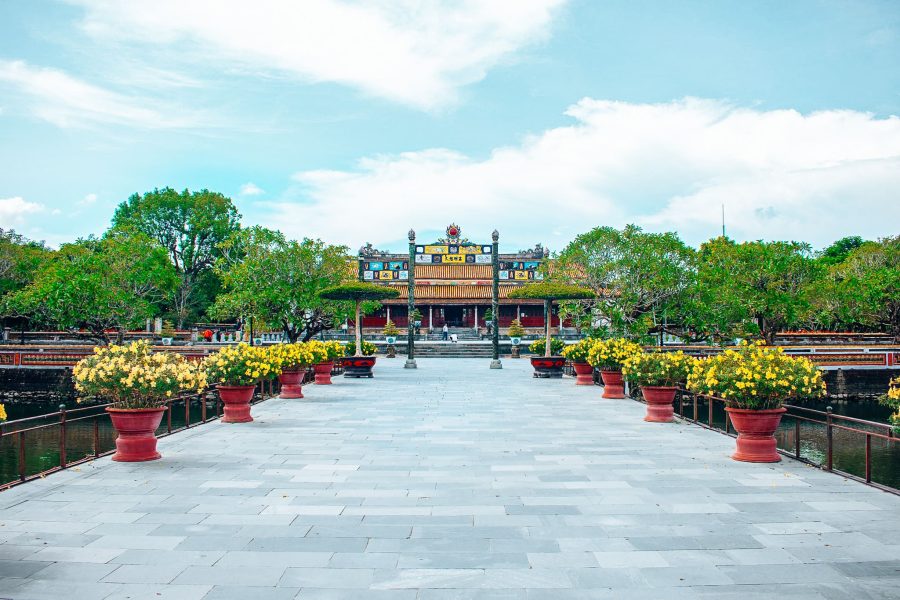
If you have time, we’d recommend visiting some of the Emperor’s tombs, found in various places around Hue.
The most extravagant tomb is that of Khai Dinh; the penultimate emperor of Vietnam who was widely unpopular with the Vietnamese as he was seen to be a ‘puppet’ of the French.
It’s said he purposefully made the tomb difficult to access with 130 steps up to the top and perched on the side of a mountain!
Our Top Tip: rent a bike to visit the tombs around Hue rather than a taxi. By doing this, you cycle through the beautiful rural countryside and get a glimpse into rural Vietnamese life.
Hoi An
Hoi An; one of the most beautiful places in Vietnam and unsurprisingly a highlight of everyone’s visit.
With its bright yellow Old Town decorated with vibrant, colourful lanterns, its 400-year-old covered Japanese Bridge, its vibrant night market and charming restaurants, Hoi An is not to be missed and is undoubtedly the best of Vietnam.
Between the 15th and 19th centuries, Hoi An was one of the most important trading ports in Asia. Drawing in traders from Europe, the US, China and Japan, each has consequently left its mark.
Japanese Merchant Houses, Chinese Temples, ancient tea houses and French Colonial buildings line the higgledy-piggledy streets and are a photographer’s dream!
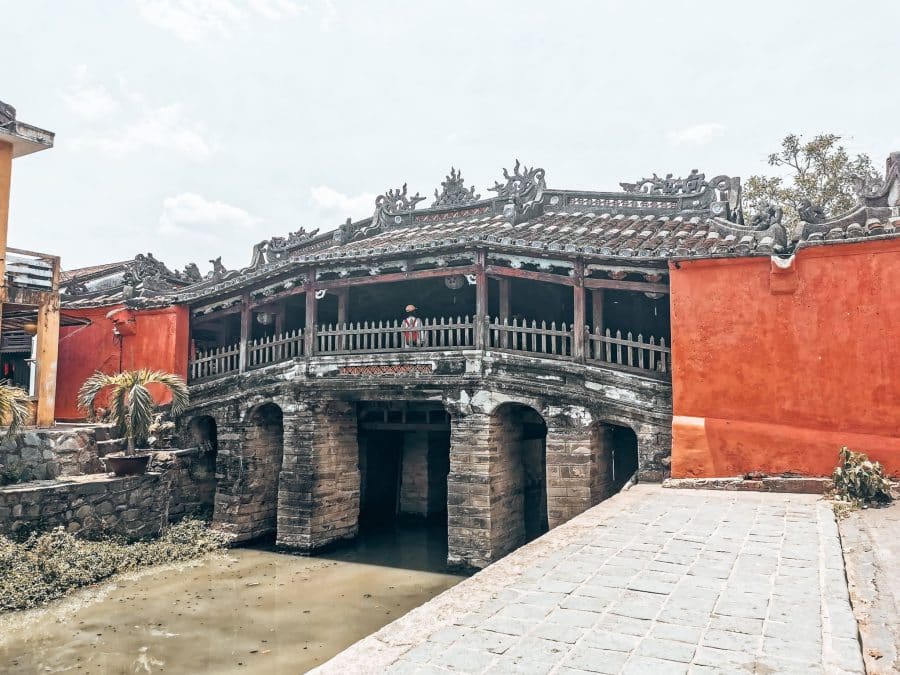
Hoi An has a lovely riverside setting that really comes alive at night when hundreds of lanterns are lit and set to float down the river.
With its elegant architecture, stylish bars, historic temples and no cars allowed, it’s no wonder the Old Town has been declared a UNESCO World Heritage Site. Ambling about these quaint streets is one of the best things to do in Vietnam.
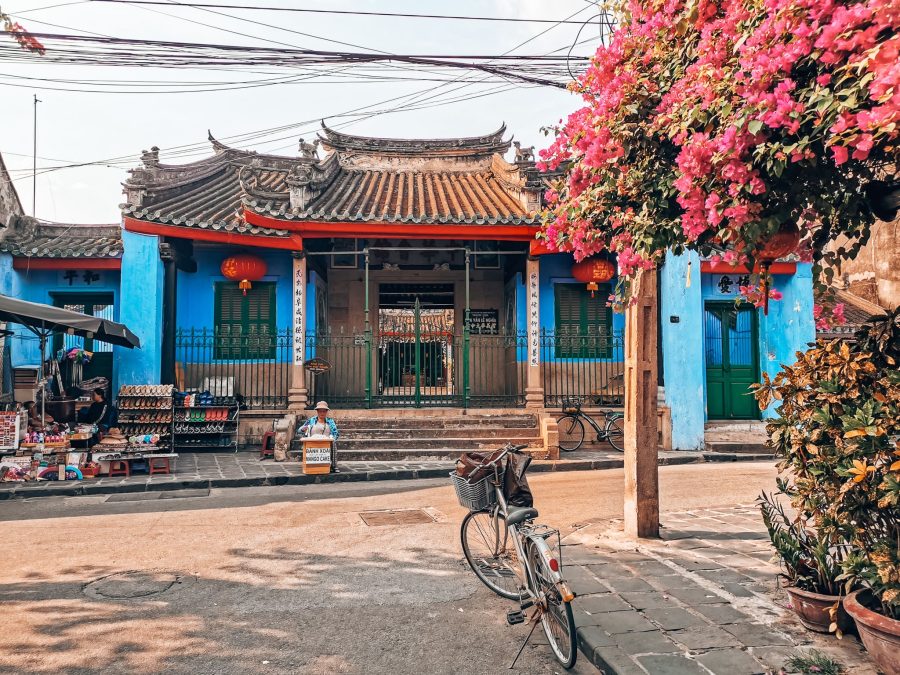
Hire a bike and venture outside of the Old Town where you’ll find sleepy back lanes that lead to small villages, picturesque rice fields and white sandy beaches.
Our Top Tip: spend at least 2 full days here so you have time to get some clothes tailored. With over 300 tailors it would be silly not to!
For our full guide on things to do in Hoi An, head to the link below.
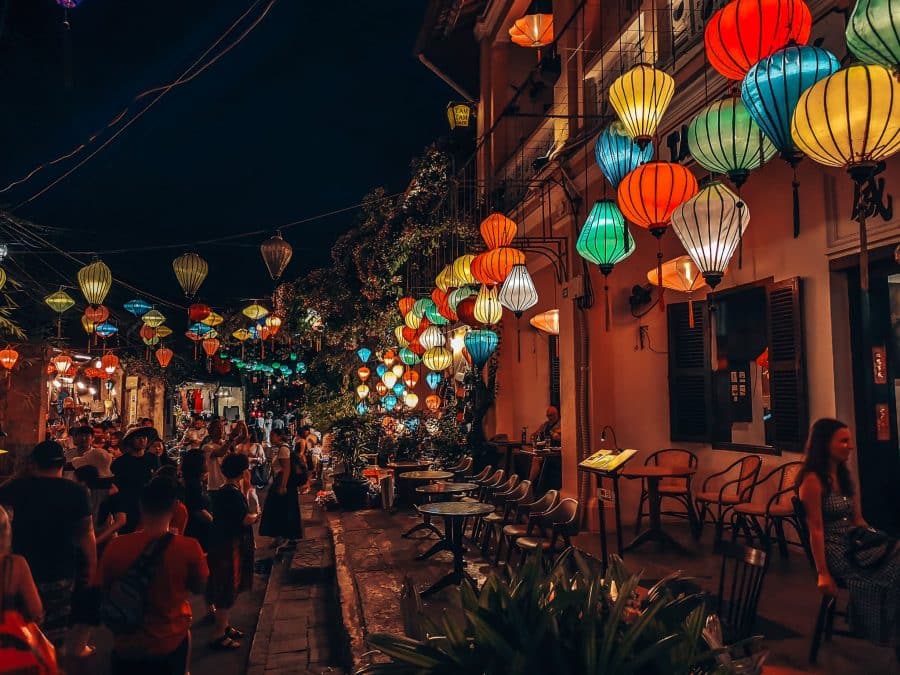
If you only have a couple of days, we’d recommend staying in the Old Town as it’s absolutely stunning, you’re within walking distance of many of the top things to do, restaurants and bars and it has an enticing atmosphere.
If you’re here for longer or you’re looking for somewhere to relax, look at hotels on the beach. These hotels tend to have shuttles into the Old Town so you can still experience the best of Hoi An.
Dalat
Known also as The City of Lovers, it’s easy to see why Dalat is Vietnam’s premier domestic honeymoon destination.
With its temperate climate, incredible scenery, and flowers of every colour imaginable, escape the heat and the hustle and bustle of the cities and bask in the laid-back charm of this little mountain town.
Dalat is one of the best places to visit in Vietnam for natural scenery. Surrounding the city are many lakes and waterfalls which are easily accessible from town. Either rent a motorbike yourself or there are plenty of tour companies that will take you.
Datanla Falls are very close to town and popular because of the roller coaster ride from the top of the falls. Elephant Falls are a bit further out but very spectacular and worth a visit.
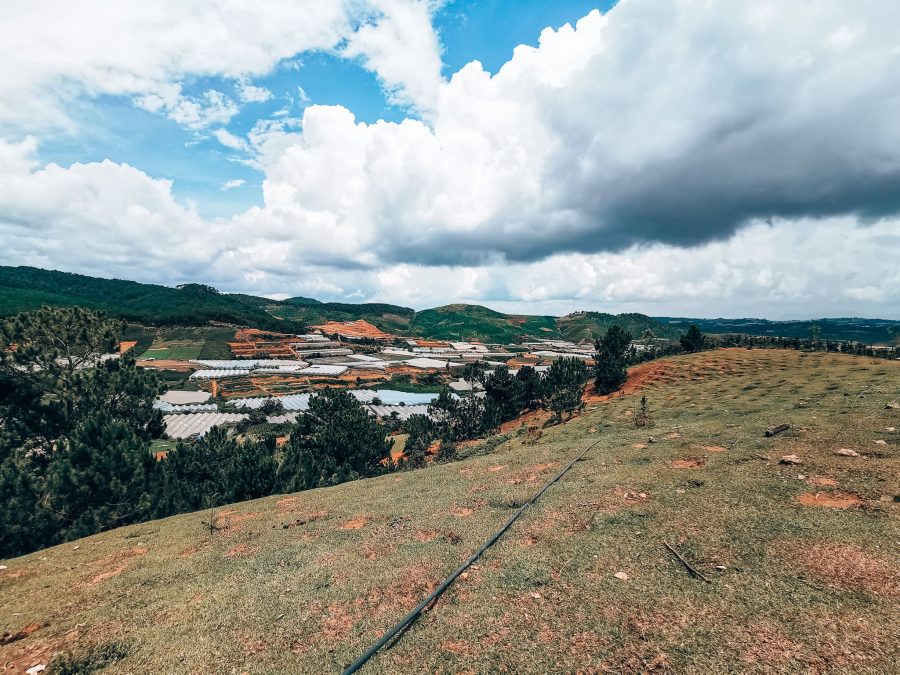
Fancy something a bit more challenging to walk off those Beer Hoi’s and endless spring rolls?
Enveloped by beautiful flowers, crops and coffee plantations, Lang Biang is a short bus ride from town and worth hiking up for some incredible views over the rich agricultural region.

Dalat is centred around charming Ho Xuan Huong Lake where you’ll see people cycling, strolling or even pedalling a swan-shaped boat around.
There are plenty of benches and grassy areas around the lake if you just fancy chilling out and enjoying a locally produced coffee.
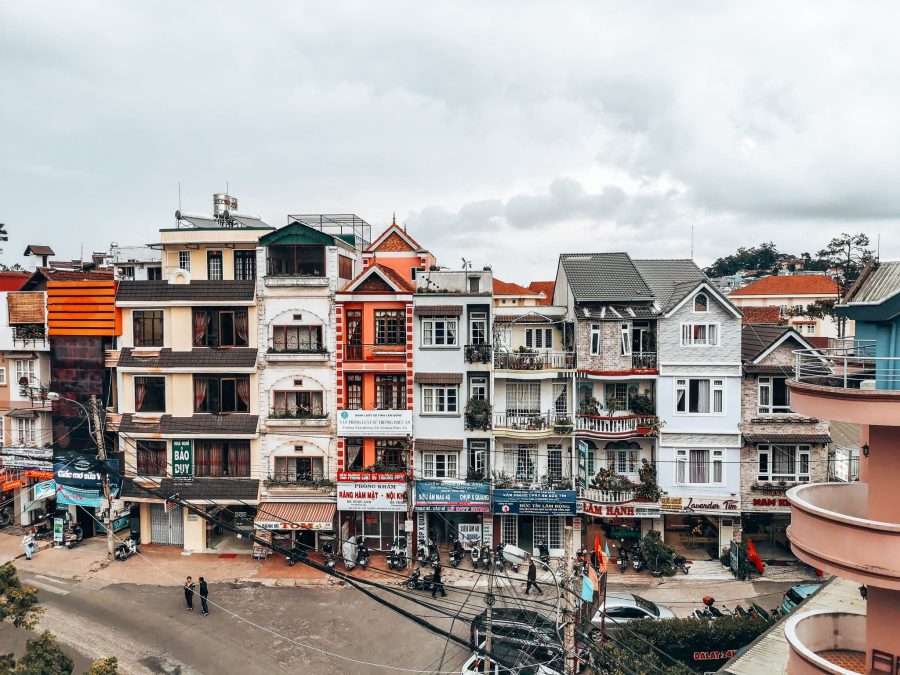
Around 5pm the centre of Dalat gets very lively with the night market. Here you’ll find locally made souvenirs, clothing, local produce and so much street food you’ll want several days to try it all!
Ho Chi Minh City
Still known locally as Saigon, Ho Chi Minh City is a bustling metropolis of old and new and is one of the most intriguing places to visit in Vietnam.
Ho Chi Minh City is the commercial capital of Vietnam with its glitzy rooftop bars, lavish hotels, fine dining restaurants, sleek skyscrapers and designer malls. Yet the essence of the Old Town lives on in its colonial architecture, bustling markets, street food stalls and ancient pagodas.
Head to Ben Thanh Market for local handicrafts, Vietnamese Art and other locally made souvenirs. Stick around until the evening when the atmosphere becomes wonderfully energetic, the streets surrounding the market come alive and try to decide which street food stall you want to try today.
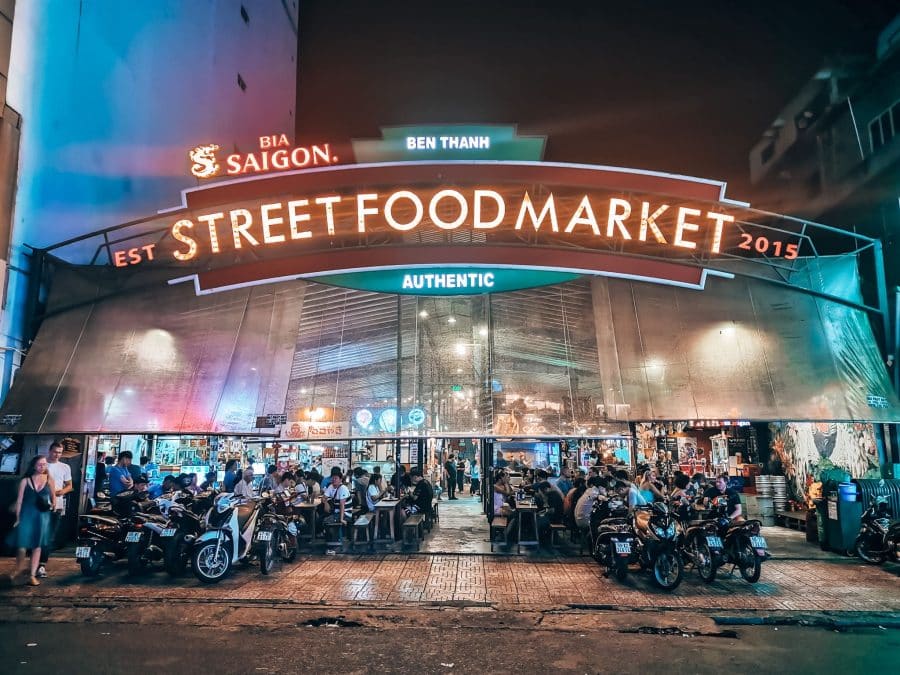
Approximately 50km from Ho Chi Minh City, leave the city behind and drive through scenes more typical to rural southern Vietnam like rice paddies to the Cu Chi Tunnels. A real eye-opener to the Vietnamese War, the Cu Chi Tunnels are one of the top things to do in Vietnam.
A vast network of over 250km of tunnels constructed by the Viet Cong during the French and American Wars stretching out as far as the Cambodian border.
Try to imagine what life was like as a Vietnamese soldier. Trapdoors, living areas, kitchens, storage facilities, command centres and hospitals; these tunnels played a huge role in Vietnam winning the war and gaining their independence.
Back in Ho Chi Minh City, visit the War Remnants Museum, which serves as a reminder of the devastation Vietnam felt during the war and witness the realities of the effects of modern warfare.
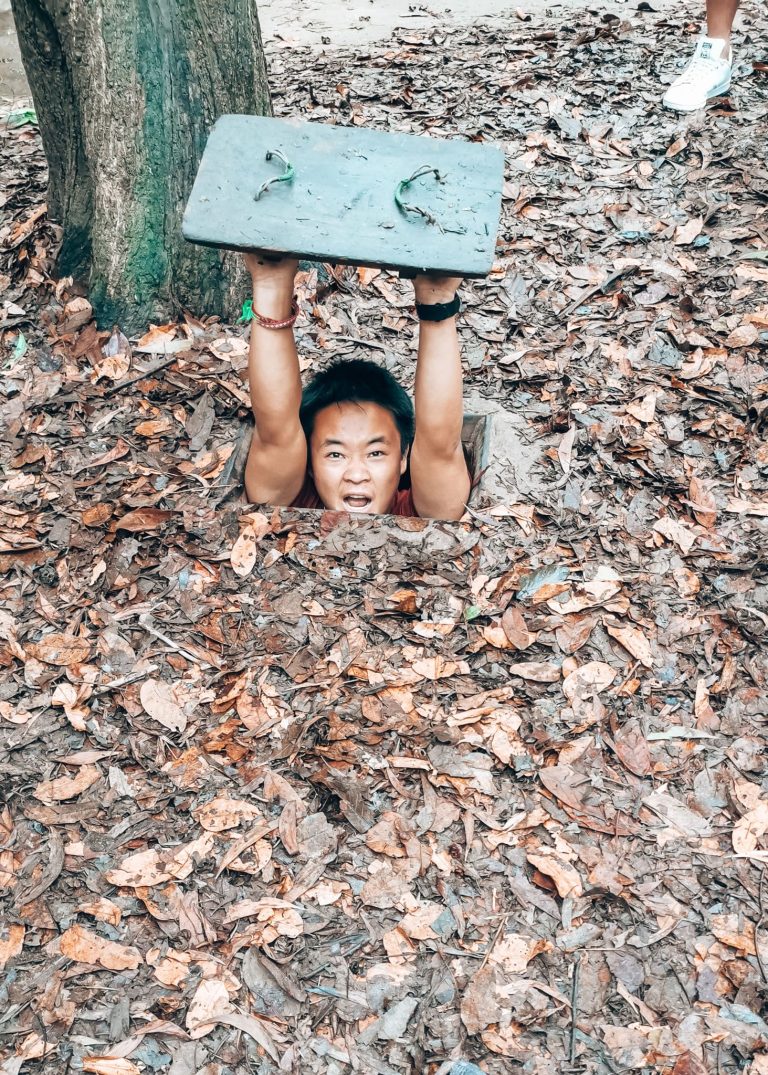
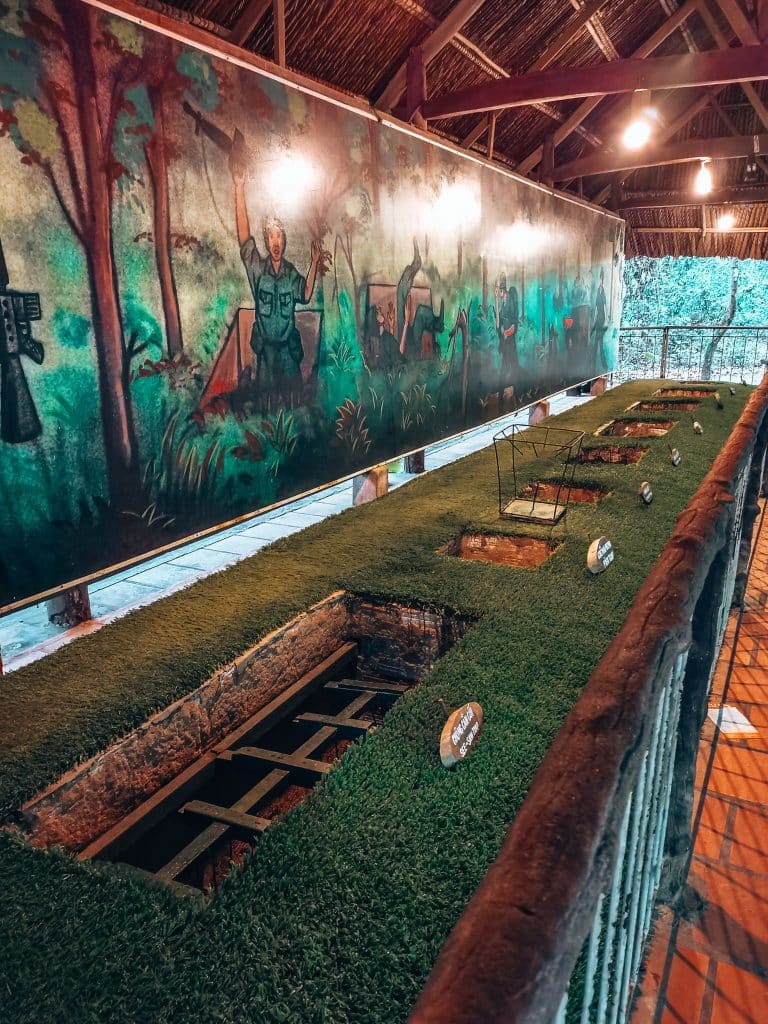
Everything You Need to Know for the Best of Vietnam
Getting Around Vietnam
Vietnam is incredibly well connected and it’s super easy to travel between places with a variety of transport options.
Flights
The quickest and most convenient way of getting around Vietnam is flying. There are major international airports in Hanoi and Ho Chi Minh City and the smaller airports have flights to/from other Asian countries.
Although flying is the most expensive way of getting around Vietnam, domestic flights are very reasonably priced with fares as low as 50 USD including checked luggage.
Buses
A very popular way of seeing the best of Vietnam is by bus. These are super cheap and run between every major destination in the country. You can also take sleeper buses if travelling longer distances or you want to maximise your days while saving accommodation costs.
Trains
Vietnam has a slow but reliable train service that runs from north to south. Journey time is incredibly slow so we’d only recommend it for short scenic journeys or if you have longer than 2 weeks.
Motorbike
One of the most adventurous ways of getting around Vietnam is by motorbike. You can either rent these yourself (from a reputable company and make sure you check for ANY marks before leaving the shop) or join a motorbike tour. This is a great way to see more of the rural countryside and get off the beaten track. Be sure to have sufficient travel insurance if you opt for this.
Taxis
There are tons of taxis in the cities and are a handy way of getting around once you’re already at your destination. Vinasun and Mai Linh are taxis you can flag down, alternatively, we’d recommend the taxi app Grab if you can use the Internet.
Bikes
Bikes are a great way of exploring your destination, whether it’s sightseeing around the cities or discovering the rural countryside.
For our detailed guide on getting around Vietnam, head to our blog post below.
Read: Getting Around Vietnam
The best time to visit Vietnam
Vietnam’s long narrow shape means that the country experiences different weather at different times of the year. Generally speaking, the best time to visit Vietnam as a whole, is December to February when temperatures are cooler and rainfall is low.
How long do I need to see the best of Vietnam?
At a bare minimum, you need two weeks to see the best of Vietnam. With two weeks, you can make your way down the country at a reasonable pace and see the main hotspots, including everything in this guide.
If you want to dig underneath Vietnam’s surface, visit off-the-beaten-track places, and spend longer in certain areas, then you’ll need at least a month.
Vietnamese Currency
Vietnam uses the Vietnamese Dong. At the time of writing, 1 USD is approximately 24, 950 VND.
Socket
Plugs type A (2 flat vertical pins), type C and type F (both 2 round pins) will all usually fit into the sockets with no difficulties.
We hope you’ve found this guide to the best of Vietnam useful in planning your trip. If there’s anything else you would like to know please drop us a comment or contact us.
Make sure you check out our other Vietnam blog posts below.


